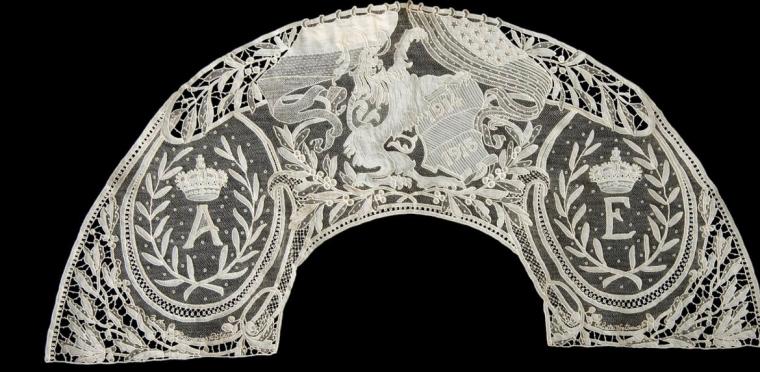
The Davenport Public Library presents “A Successful Humanitarian Story Hidden in Belgian War Lace of 1914-1918" -- February 17.
Thursday, February 17, 6 p.m.
Presented by the Davenport Public Library
A little-known but historic event in the history of the Hoover administration will be presented as part of the Davenport Public Library's virtual 3rd Thursday at Hoover's Presidential Library & Museum programming, with retired Stanford University staffer Evelyn McMillan, on February 17, discussing how the Brussels Lace Committee, the Hoovers, and two major relief organizations came together to support the lacemakers of Belgium during World War I in the virtual program A Successful Humanitarian Story Hidden in Belgian War Lace of 1914-1918.
With examples of the delicate works currently on display in the textile collection of the Smithsonian's National Museum of American history, this humanitarian saga begins in August of 1914, after the German army invaded and occupied Belgium. As the Smithsonian's Web site states, “When Great Britain set up a blockade of the Belgian borders to prevent supplies from reaching Germany through Belgium, seven million Belgian people were cut off from imported food and other needed supplies. After the start of World War I, the Commission for the Relief in Belgium (CRB) was established with Herbert Hoover, a wealthy industrialist living in London at the time, as chairman. Hoover, later U.S. President (1929-1933), was instrumental in negotiating with England and Germany for the delivery of much needed food shipments to Belgium. The negotiations also included the importation of thread for the Belgian lace makers and the export of the lace made from this thread. Orders for and deliveries of war laces were managed through the CRB office in London. Numerous people in the Allied countries were generous in their willingness to buy the laces to support the Belgians.
"The Belgian lace committees worked closely with the CRB, especially as the lace makers' work became even more important during the war. Several famous Belgian artists were enlisted to create new designs. Among them were Isidore de Rudder, his sister Maria de Rudder, Charles Michel, and Juliette Wytsman, who designed some of the war laces that are now part of the collection at the National Museum of American History.
"World War I laces often included names of people, places, inscriptions, and dates – a characteristic not usually found in other lace work. The lace often incorporates the coats of arms or national symbols of the Allied nations, as well as the nine Belgian provinces, in recognition of the help received. It was hoped that these distinguishing elements would appeal to generous people around the world who might buy these laces in support of the Belgians. Most of the laces in the collection at the National Museum of American History were bought in Europe by American collectors and donated to the Museum."
A Successful Humanitarian Story Hidden in Belgian War Kace of 1914-1918 will be presented via Zoom webinar at 6 p.m. on February 17, the event is free to the public, and registration is available through the Davenport Public Library Web site. For more information on the virtual program and the monthly 3rd Thursday at Hoover's series, call (563)326-7832 and visit DavenportLibrary.com.










